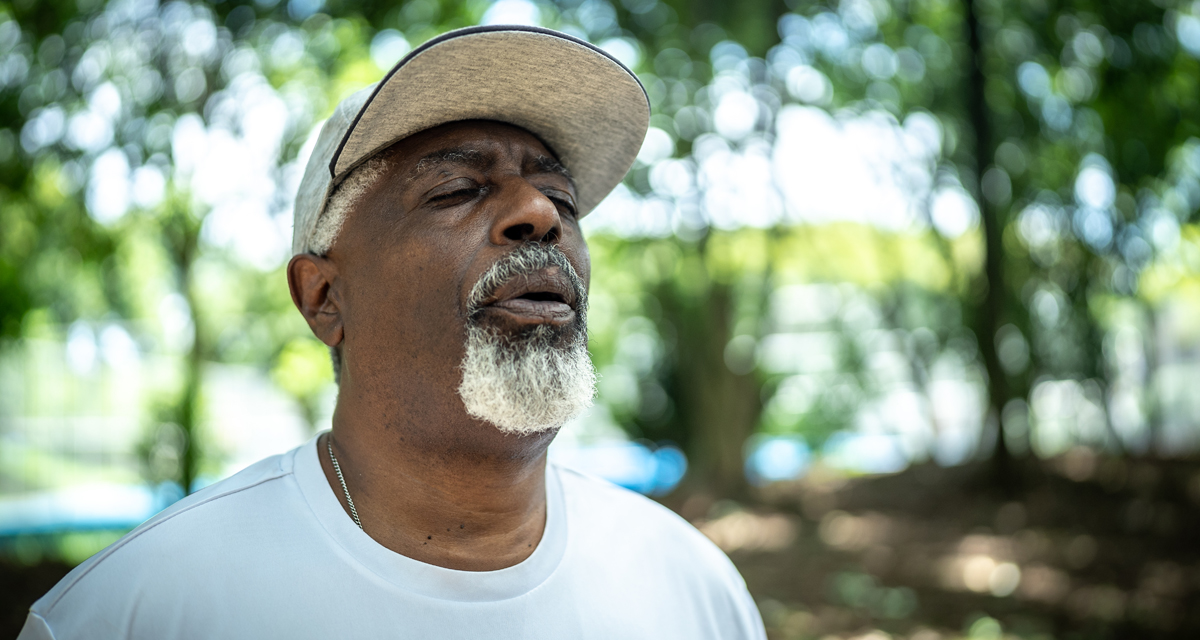Nowadays, stress has become a very common thing in everyday life. We all have pressures and stresses stemming from the demands of everyday living, such as financial uncertainty, emotional relationships, and job-related expectations. Unfortunately, feelings of stress can be multiplied when you are in recovery. Handling the risks of relapse, everyday temptations, and even withdrawals alongside regular stress can take a toll on your mental and physical well-being.
Fortunately, there are plenty of ways that mindfulness-based practices can help alleviate the stresses you endure during recovery. Mindfulness tools are well documented and backed by evidence for helping to bring about a more peaceful and stress-free life.
MBSR and Its Origins
Mindfulness-Based Stress Reduction (MBSR) is a program that was developed in the 1970s by Dr. Jon Kabat-Zinn and was an 8-week program focused on reducing stress. The training is intense and focuses on mindfulness – the conscious effort to stay in the moment and participate in one’s surroundings without judgment. MSBR training combines elements of mindfulness, meditation, yoga, and physical awareness to help participants manage stress, but it can also be used to manage pain and sickness.

In fact, MBSR was initially used to treat people with chronic health problems. The technique reportedly helped them to manage the effects of pain associated with illness. Today, it is used to help people all over the world navigate many daily challenges, including physical, mental, emotional, and more.
Many people begin the course as they desire to live with a greater awareness of themselves and the life around them.
Techniques and Exercises Involved in MBSR
Within MBSR, there are many techniques and exercises used to help people cultivate mindfulness and manage their stress. These techniques show a person how to reduce stress through mindfulness.
Some of the main practices include:
Mindfulness Meditation
Central to MBSR is the practice of mindfulness meditation. Individuals are guided through meditation exercises involving being mindful of the present moment they are in while focusing on their breath, body, thoughts, and emotions. The point of this exercise is to maintain a greater awareness of their own experiences while also accepting those experiences.
Body Scan
During a body scan, the individual pays intentional attention to the sensations in their body.
This exercise can be done sitting up or lying down. The purpose of this exercise is to bring the individual to a place of relaxation and body awareness. This also helps them release tension in the body.
Yoga
MBSR often includes gentle yoga poses and other stretching exercises to assist in relaxation and flexibility. Individuals focus on their body and breathing during these exercises.

Mindful Breathing
Mindful breathing exercises make the individual aware of their breathing. Often, the focus is on observing its natural rhythm without trying to control it. Some examples of these techniques include deep breathing or counting breaths in order to be engaged in the present moment and promote calmness.

Evidence-Based Research Supporting MBSR’s Effectiveness
There have been numerous studies that have shown the effectiveness of MBSR in reducing stress, anxiety, and depression, as well as improving a person’s overall health and well-being.
For example, research demonstrated a 41% decrease in mortality over two years when MBSR was used as a part of standard cardiac rehabilitation treatment for patients. MBSR has also been shown to be effective in mindfulness for anxiety and depression. Similarly, mindfulness may be helpful in managing chronic pain conditions.
Even in cases of certain cancers, such as melanoma and metastatic breast cancer, MBSR has been associated with increased survival rates.
MBCT and Its Purpose
Mindfulness-Based Cognitive Therapy (MBCT) combines parts of mindfulness meditation with principles of cognitive therapy. It was first developed to help prevent relapse in those who experienced recurrent bouts of depression. The goal of MBCT is to teach individuals how to engage differently in the thoughts, feelings, and bodily sensations that contribute to relapse.
The development of MBCT was inspired by the Mindfulness-Based Stress Reduction (MBSR) program. Drs. Zindel Segal, Mark Williams, and John Teasdale adapted mindfulness practices from MBSR and integrated them with cognitive therapy techniques to create MBCT.
The primary goal of MBCT is to help people become more aware of any recurring patterns of negative thinking and other reactive behaviors that can cause them to relapse. Like MBSR, individuals engage their thoughts and emotions with clarity and acceptance rather than becoming entangled in them and feeling ashamed of them.
Techniques and Practices Utilized in MBCT
Some of the techniques used in MBCT are similar to those in MBSR, except they include the incorporation of cognitive techniques. The goal is to create a greater awareness of a person’s thoughts, emotions, and behaviors and the relationship between them. The purpose is to have more control over a person’s responses to certain situations. Some techniques and practices utilized in MBCT include:
Mindfulness Meditation
Various mindfulness meditation practices are used in MBCT. It is aimed at developing awareness of the present moment and non-judgmental observation of thoughts, emotions, and bodily sensations. Some examples of mindfulness meditation include focused attention on the breath, body scan, and awareness of thoughts and emotions as they arise, similar to MBSR.
Cognitive Restructuring
In MBCT, cognitive therapy techniques are used to help people recognize and challenge negative thought patterns that can cause them to relapse. Through cognitive restructuring, participants learn to examine their negative thoughts and challenge their validity. This way, they can develop more balanced and realistic perspectives.

Cognitive Defusion
Cognitive defusion techniques involve learning to observe thoughts without becoming consumed by or entangled in them. Instead of automatically believing and reacting to negative thoughts, individuals practice creating distance from their thoughts and seeing them as mental events that pass over time.
Thought Monitoring
Thought monitoring exercises help individuals become more aware of the content and frequency of their thoughts. By tracking their thoughts, individuals can identify patterns and triggers more easily.
Success Stories and Testimonials From MBCT Participants
Studies have been conducted to show the effect of MBCT practices on those with depressive symptoms. In these studies, many people who participated in MBCT reported significant reductions in depressive symptoms and improvements in their overall quality of life. By learning to relate to their thoughts and emotions with greater acceptance and compassion, participants developed a sense of resilience, even when faced with the different stresses of their lives.
Other Mindfulness-Based Practices
There are a number of other techniques that can be used in mindfulness-based practices, especially during recovery.
Breathing Exercises and Meditation Techniques
Breathing exercises and meditation techniques are key aspects of mindfulness-based practices. These practices center around the breath as a focal point for developing present-moment awareness and helping create a sense of calm and clarity.
Some examples of these include:
- Awareness of Breath – The breath is the space for attention, helping participants to ground themselves in the present moment. By paying attention to these sensations, individuals develop greater sensitivity to their own experiences.
- Deep Belly Breathing – In this exercise, individuals focus on breathing deeply into their belly, allowing it to expand with each breath and contract with each exhale.
- Counting Breaths – With this exercise, the person counts each breath cycle, starting from one and counting up to a predetermined number, such as five or ten, then starting again from one. Counting breaths helps to center attention and prevent the mind from wandering.
- Breath Awareness Meditation – Breath awareness meditation is being aware of the natural flow of the breath without trying to control it. The goal is to focus attention on the sensations of the breath as it moves in and out of the body and pay attention to the rhythm and quality of each breath as a person inhales and exhales.
- Box Breathing – Box breathing, also known as square breathing, is a technique that involves inhaling, holding the breath, exhaling, and holding the breath again, each for an equal count of seconds, commonly four seconds. This helps to regulate a person’s nervous system and bring them to a place of calm.
Mindful Movement and Yoga for Stress Reduction
Mindful movement practices like yoga offer a holistic approach to stress reduction by incorporating movement with breath awareness and mindfulness.

In yoga, individuals use breath-centered movement, coordinating their breath with a series of poses, or asanas, while tuning into the sensations in their body and the quality of the breath. This is beneficial as many mindfulness-based practices center on these qualities. This flow promotes relaxation, flexibility, and mental focus, which reduces cortisol levels, the stress hormone, in the body.
Yoga also brings awareness of the connection between the mind and the body, encouraging people to listen to their bodies and respond with compassion and self-care, which is another goal of mindfulness-based practices.
Other Mindful Movement Methods for Stress Reduction
There are other methods that can be used to promote mindful movement, such as tai chi and qigong. These methods involve gentle and intentional movements as well as deep breathing to promote relaxation and coordination.
These exercises are based on traditional Chinese medicine and promote health and vitality throughout the body. Tai chi and qigong have been shown to reduce stress, anxiety, and depression. They also help improve the quality of sleep and a person’s overall well-being.
By fostering mindful awareness and focusing attention on the present moment and bodily sensations, mindful movement practices help individuals cultivate a sense of inner peace, clarity, and self-awareness.
Incorporating Mindfulness Into Daily Routines
By bringing mindfulness to everyday activities such as eating, walking, and even washing dishes, we can cultivate a deeper sense of presence and appreciation for the richness of each moment. Incorporating mindfulness into daily routines doesn’t have to be complicated.
Here are some simple ways to start:
- Start your day with a brief meditation session.
- Practice mindful eating by paying full attention to the flavors, textures, and sensations of each bite.
- Keep moving – you can go for a walk, do yoga, or stretch. While doing so, pay attention to the sensations in your body as you move and focus on your breath.
- Take short mindfulness breaks throughout the day to pause and reset.
- Give others your full attention, listen without judgment, and try to understand their perspective before responding.
- Develop a bedtime routine, which could include stretching, meditation, or reading a book.
- Start small by incorporating brief mindfulness practices into your daily routine. These can be as simple as creating small pockets of space to do mindfulness-based activities and you can increase the duration and frequency as you build consistency.
- Be patient and gentle with yourself. Mindfulness takes time and practice to develop, so celebrate your small victories as you progress.

Mindfulness Resources
Mindfulness-based practices are powerful in managing stress and anxiety. They help promote greater resilience and enhance a person’s overall well-being. They have also been proven to assist in a person’s physical and mental health. By embracing mindfulness as a way of life, we can cultivate a deeper sense of peace, clarity, and connection with ourselves and the world around us.
The journey of mindfulness is not about escaping the challenges of life but about learning to meet them with greater presence, resilience, and compassion towards ourselves. As we continue to explore and integrate mindfulness-based practices into our daily lives, let’s discover a sense of inner peace and well-being that enriches our lives and the lives of those around us.
Remember, there are many available resources on mindfulness in recovery and mental health, including online resources, community programs, and support groups. Contact us for more information.
Resources:
- Linden, W. (1996). Psychosocial Interventions for Patients With Coronary Artery Disease. Archives of Internal Medicine, 156(7), 745. https://doi.org/10.1001/archinte.1996.00440070065008
- Khoury, B., Lecomte, T., Fortin, G., Masse, M., Therien, P., Bouchard, V., Chapleau, M.-A., Paquin, K., & Hofmann, S. G. (2013). Mindfulness-based therapy: a comprehensive meta-analysis. Clinical Psychology Review, 33(6), 763–771. https://doi.org/10.1016/j.cpr.2013.05.005
- Anheyer, D., Haller, H., Barth, J., Lauche, R., Dobos, G., & Cramer, H. (2017). Mindfulness-Based Stress Reduction for Treating Low Back Pain. Annals of Internal Medicine, 166(11), 799. https://doi.org/10.7326/m16-1997
- Spiegel, D., Kraemer, HelenaC., Bloom, JoanR., & Gottheil, E. (1989). EFFECT OF PSYCHOSOCIAL TREATMENT ON SURVIVAL OF PATIENTS WITH METASTATIC BREAST CANCER. The Lancet, 334(8668), 888–891. https://doi.org/10.1016/s0140-6736(89)91551-1
- Tickell, A., Byng, R., Crane, C., Gradinger, F., Hayes, R., Robson, J., Cardy, J., Weaver, A., Morant, N., & Kuyken, W. (2020). Recovery from recurrent depression with mindfulness-based cognitive therapy and antidepressants: a qualitative study with illustrative case studies. BMJ Open, 10(2), e033892. https://doi.org/10.1136/bmjopen-2019-033892
- Kuyken, W., Warren, F. C., Taylor, R. S., Whalley, B., Crane, C., Bondolfi, G., Hayes, R., Huijbers, M., Ma, H., Schweizer, S., Segal, Z., Speckens, A., Teasdale, J. D., Van Heeringen, K., Williams, M., Byford, S., Byng, R., & Dalgleish, T. (2016). Efficacy of Mindfulness-Based Cognitive Therapy in Prevention of Depressive Relapse. JAMA Psychiatry, 73(6), 565. https://doi.org/10.1001/jamapsychiatry.2016.0076
- Is MBSR Evidence Based? (n.d.). Mindful Leader. https://www.mindfulleader.org/blog/55916-is-mbsr-evidence-based
- Mindfulness-based stress reduction (MBSR) – MBSR exercises. (n.d.). Guy’s and St Thomas’ NHS Foundation Trust. https://www.guysandstthomas.nhs.uk/health-information/mindfulness-based-stress-reduction-mbsr/mbsr-exercises
- Institute for Mindfulness-Based Approaches :: What is MBSR? (n.d.). Www.institute-For-Mindfulness.org. https://www.institute-for-mindfulness.org/offer/mbsr/what-is-mbsr
- admin. (2023, August 16). Power of Mindfulness in Addiction Recovery | RACNJ. Www.racnj.com. https://www.racnj.com/mindfulness-in-recovery/
- Staff, M. (2023, January 20). Meditation for Anxiety. Mindful. https://www.mindful.org/mindfulness-meditation-anxiety/#meditation
- Mindfulness meditation: A research-proven way to reduce stress. (2019, October 30). American Psychological Association. https://www.apa.org/topics/mindfulness/meditation
- Call, D., Miron, L., & Orcutt, H. (2014). Effectiveness of Brief Mindfulness Techniques in Reducing Symptoms of Anxiety and Stress. Mindfulness, 5(6), 658–668. https://doi.org/10.1007/s12671-013-0218-6


